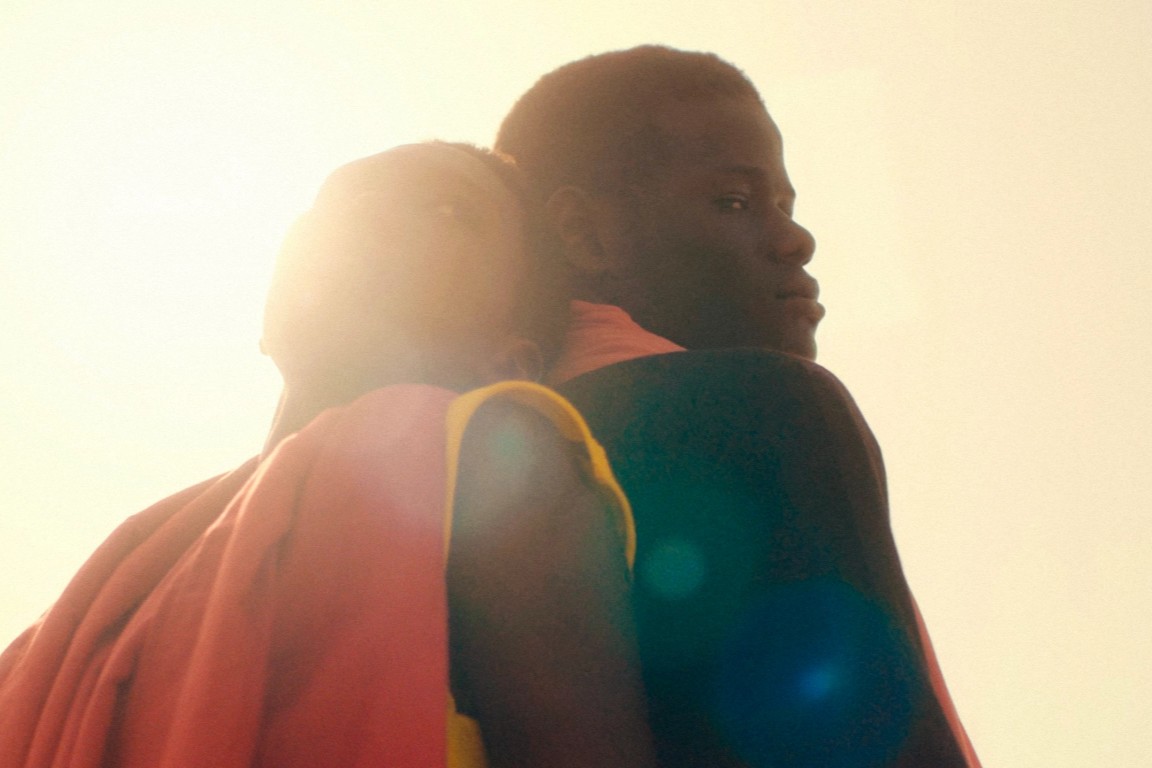Darkness creeps in via the scalding sun in this haunting fable from Ramata-Toulaye Sy, as love is turned sour by drought and obsession. A quiet, almost sedate drama that gets the viewer acquainted with the normal rhythms of life in a Senegalese village in order to show how devastating it is on its population when those are disrupted, and the effect on one unreliable, solipsistic young narrator in particular. With a steady directorial hand and a visual sense that treats beauty and death with equal awe, Banel & Adama proves that a languid, dreamy approach doesn’t mean that a narrative lacks power.
Banel (Khady Mane) and Adama (Mamadou Diallo) are a young married couple who have been in love since childhood. However, as per the law in their village, Banel had previously been married to Adama’s brother Yero, the village chief. After Yero’s death, tradition dictates that Adama, as the deceased’s bother, should marry his widow. A happy outcome for Banel. Too happy, as the village dislikes the brazenness with which she carries herself. They also react strongly to Adama turning down the role of chief which would normally pass down to him. The pair spend their evenings digging out a house outside of the village that had been completely covered by a recent sandstorm with the plan of moving in away from prying eyes. However, drought and famine strike the village, which forces Adama to reassess his priorities and his responsibility to his kin, and which makes the villagers begin to suspect that Banel may be the reason for the misfortune.
Banel & Adama is a love story, but one which falters on the crucibles of tradition, responsibility, religion, and plain selfishness. We witness the last of these firsthand from Banel’s viewpoint. This complicated, mercurial young woman is possessive of her husband to a fault. This is fine as long as all is well. There is friction between her and her pious brother Racine (Moussa Sow), and Adama is constantly on the defensive about his refusal to take up the mantle of chief, but these are fleabites to Banel in the grand scheme of things. But once the drought comes, and first the cattle, then the villagers, begin dying in the streets, she tries to draw Adama into their own chrysalis. She wants him all to herself so they can emerge once again and take flight once it’s all settled. Adama however, is still an important man in the village and spends less and less time with his wife in order to deal with the catastrophe. This also means he spends far less time digging for their new home. It’s a sign of a lack of commitment in Banel’s eyes, but in the face of a natural disaster, it’s suggestive that their plans are quite literally built on shifting sands.
The film may be called Banel & Adama, but this isn’t a tale of star-crossed lovers. Rather, it is a character study of one woman unknowingly wearing her flaws like sequins shining in the sun. The things she has no control over – religion, village culture, superstition, the climate – ultimately become muddied with those that she does. She’s prone to tantrums, is pugnacious towards everyone, and she’s needlessly violent towards animals. She’s partly admirable, and partly infuriating. We don’t need to spend anywhere near as much time with Adama to get a sense of him, and a feel for why Banel loves him. Yet Banel herself remains enigmatic. What exactly is she capable of? Where has this anger come from? Has she cast a spell? She’s as elusive and ineffable as the sands she and Adama hope to defy to build their new life. Is it a flaw that we spend the entire film in her head and are left grasping at empty air? Or is that the point? That it’s all in the end, dust to dust?
Screened as part of Glasgow Film Festival 2024


Comments